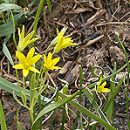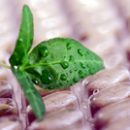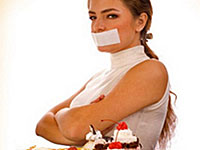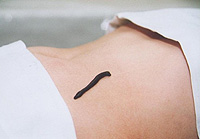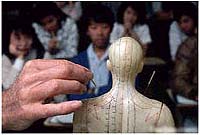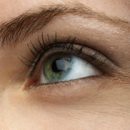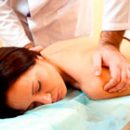Hirudotherapy is a perspective treatment method that practically does not have contraindications devoid of complications inherent in chemical drugs that do not have age restrictions combined with other therapy requiring further study of the mechanisms of action of the peer secretary. How to grow and save leeches? How to make friends with leech? Read in our article
Content
House for leech
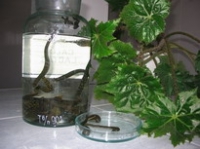 Glass dishes are used to maintain leeches. Best glassware for leeches — These wide-stranded transparent banks, in which the hand freely passes, or banks, absolutely not having the throat well, if the top edge of the vessel has thickening or a few bent outward.
Glass dishes are used to maintain leeches. Best glassware for leeches — These wide-stranded transparent banks, in which the hand freely passes, or banks, absolutely not having the throat well, if the top edge of the vessel has thickening or a few bent outward.
With a crowded content of leeches, various diseases appear, often leading to mass death. Vehius filled with blood, you can not keep in one bank with other leeches.
Leeches very willingly leave the vessel in which they are contained, so you must always make sure that it does not remain open even for a short time. It is necessary to close the vessel with dense white pure matter and tie tight.
Water quality has great importance to leeches. They can only live in raw water. It is best to use water from natural reservoirs, t. E. River, lake or pond. The city has to use tap water. It is necessary, however, to consider that in a number of cities, water is chlorized, and even the minimum content of chlorine, being harmless to humans, is disastrous for leech.
Such water should be changed daily, it is better to prepare it in advance, for example, per day. Pre-blank has a dual value: equalize the temperature of fresh water with replacing and ensure the release of chlorinated water from chlorine.
No need to pour water to the very top, as leeches tend to get out and squeeze to the wall of the jar over the water. Therefore, it is best to fill the container for half or two-thirds, maximum — three quarters of her height.
River water in the summer should be changed, at least once a week, and in winter — in two weeks and more. In addition, in warm, clear weather you need to periodically make banks on fresh air, and remove with them covers for refreshment.
It is necessary to regularly air the room so that there are no sharp odors. It should also be contained in the purity of the vessels in which there are leeches. Before they are first placed leeches, they must be thoroughly washed with water, but without soap. It is best for the content of leeches to take a new one, never used (especially for medicines) dishes.
When changing water, it should be thoroughly rinse a vessel from the inside. This is usually done by hand, clean piece of matter, a special brush, which is usually brushed in the inner surface of the aquariums, or a rash used in laboratories for washing glass dishes. Without pouring water, we must thoroughly wipe the walls and the bottom of the vessel from the inside. At the same time, the leeches descended to the glass disappear and, fascinated by the movement of water, wash and partially exempted from pieces, rinse them again on Seret, turning around to hand to help free from films. Then the vessel is rinsed again, poured the right amount of water and shifted in it. After that cover the matter and tight tight.
We cannot touch leeches in the bank of leeches, and the necessary for use should be removed with a wooden spoon.
Banks must often be inspected, and if there are dead leeches there, they need to be removed so as not to spoil the water and have not infected healthy.
It is not recommended to keep leeches with too high or too low temperatures — It is always detrimental for them. It is also necessary to avoid a sharp change of temperature. Leeches need light, content in a completely dark room is harmful to them. At the same time, they avoid prolonged bright lighting, especially when the light falls on the abdominal side. So vessels with leeches do not need to keep in the sun or in general on bright light.
Signs of benignness of leeches
Healthy hungry and fairly active leeches can be called benign. Signs of the fitness of the leech are as follows:
-
The presence of a pronounced reducing reflex in the leech, which is that the body when touched it becomes short, thick, elastic and dense;
-
Benign leeches released into a vessel with a small amount of water, not more than half an hour climb on the walls up;
-
If you put your hand in the jar with leeches, then the benign leeches will immediately climb it and begin to bite.
Diseases of medical leeches
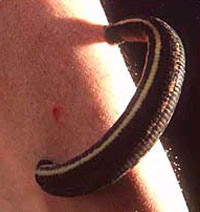 Leeches, especially those that contain in the plant and banks, are subjected to different diseases; Some are often cauldron and affect the source or ponds of the whole edge, and sometimes one plant or a jar. Unfortunately, leeches have little studied diseases, as well as methods of treatment. Apparently, most of the leeches disease occurs as a result of improper treatment of them during the fishing, transportation and storage. Therefore, the main one, if not the only way to combat diseases of leeches, — This is prevention, hygiene, and not therapy. Among the numerous diseases of the leech can be called the following:
Leeches, especially those that contain in the plant and banks, are subjected to different diseases; Some are often cauldron and affect the source or ponds of the whole edge, and sometimes one plant or a jar. Unfortunately, leeches have little studied diseases, as well as methods of treatment. Apparently, most of the leeches disease occurs as a result of improper treatment of them during the fishing, transportation and storage. Therefore, the main one, if not the only way to combat diseases of leeches, — This is prevention, hygiene, and not therapy. Among the numerous diseases of the leech can be called the following:
-
Metal disease, or knot, - from it the whole body of the leech is made noded or stitched, expands in some places and is narrowed in others; The nodes are gradually hardening, and leech dies in a state of tetanic reduction. Sometimes the development of nodeships is accompanied by the formation of the tear of the Yazv. This disease appears in March and rampant until June.
-
Jaundice, or Jagging. Leeches scatter, become touch with soft, flabby and acquire a yellowish color; Death comes very soon.
-
Mucosa disease, or ease. The body of leech becomes elastic, covered with thick adhesive mucus; The disease proceeds quickly, ends with death, and very infection for healthy leeches.
A specialist caring for leeches observing their condition should immediately remove those leeches that are noticeable signs of the disease. If several patients or dead leeches are found at once, it is necessary to thoroughly rinse the vessel and other leeches and change water.
The exact execution of all rules of care will lead to a decrease in the incidence of leech.

